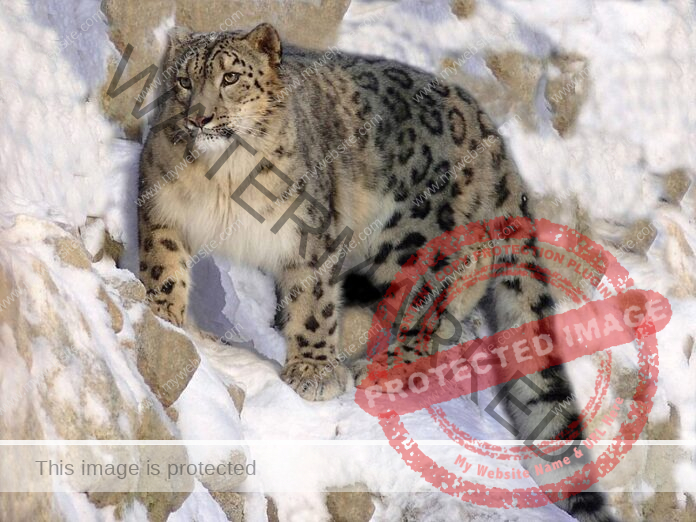The Snow Leopard Population Assessment in India (SPAI) Program of Union Ministry of Forest and Environment, in its first-ever scientific exercise to assess the count of the elusive predator found presence of 718 Snow Leopard individuals in India’s four states and two Union Territories present in the Himlyan range.
Scientific exercise conducted between 2019-2023
Based on data analysis of the scientific exercise which commenced in 2019 ended in 2023 with the Union Territory of Ladakh found to have the highest count of the mountain cat pegged at 477 followed by 124 in Uttarakhand, 51 in Himachal Pradesh, 36 in Arunachal Pradesh, 21 in Sikkim besides 9 in Jammu and Kashmir.
Camera traps installed at 1,971 locations
During the SPAI exercise, a significant 13,450 km of trails surveyed the Snow leopard signs, while camera traps were installed at 1,971 locations for 180,000 trap nights. The Snow leopard occupancy was recorded in 93,392 square km area. A total of 241 unique Snow leopards were photographed.
The mega exercise was carried out by the Wildlife Institute of India (WII), National Coordinator for the programme in support with snow leopard range states and two conservation partners, the Nature Conservation Foundation, Mysuru and WWF-India.
120,000 square km of Snow leopard habitat covered in trans-Himalayan region
SPAI systematically covered over 70 percent of the potential snow leopard range in the country, involving forest and wildlife staff, researchers, volunteers, and contributions from knowledge partners. Covering approximately 120,000 square km of crucial Snow leopard habitat across the trans-Himalayan region, including UTs of Ladakh and J&K, and states such as Himachal Pradesh, Uttarakhand, Sikkim, and Arunachal Pradesh, the SPAI exercise was conducted from 2019 to 2023 using a meticulous two-step framework.
Until recent years, the snow leopard range in India was undefined due to a lack of extensive nationwide assessments for this vulnerable species. The report also mentions the need for establishing a dedicated Snow Leopard Cell at WII under the MoEFCC, with a primary focus on long-term population monitoring, supported by well-structured study designs and consistent field surveys.
Consistent monitoring is essential to ensuring Snow leopards’ long-term survival. For the same, states and UTs can consider adopting a periodic population estimation approach (every 4th year) in the Snow leopard range. These regular assessments will offer valuable insights for identifying challenges, addressing threats, and formulating effective conservation strategies.
The ministry had released an amount of Rs 386.505 lakh for the recovery programme for Snow leopards in Leh Division.
About the Mountain Cat
The snow leopard (Panthera uncia), commonly known as the ounce, is listed as vulnerable on the Red List of International Union for Conservaion of Nature (IUCN) because the global population is estimated to number fewer than 10,000 mature individuals and is expected to decline about 10 percent by 2040. It is mainly threatened by poaching and habitat destruction following infrastructural developments. The species of large cat in the genus Panthera of family Felidae, is native to mountain ranges of Central and South Asia. It inhabits alpine and subalpine zones at elevations of 3,000–4,500 m (9,800–14,800 ft), ranging from eastern Afghanistan, the Himalayas and the Tibetan Plateau to southern Siberia, Mongolia and western China. In the northern part of its range, it also lives at lower elevations.
State/UT Snow Leopards Camera Trap sites Unique individuals
Ladakh 477 956 126
Uttarakhand 124 382 40
Himachal Pradesh 51 284 44
Arunachal Pradesh 36 115 08
Sikkim 21 99 14
J&K 09 135 09



























